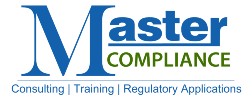Investment advisers should consider the need to perform a branch office inspection of branch offices pursuant to a branch office inspection schedule. Firms should consider whether a branch audit is warranted using factors such as nature and complexity of the branch’s business, volume of business, complaints, disclosures, number of registered persons, and other relevant factors determined by the firm. Firms are to document the exam schedules for each branch office including a description of the factors used to determine the exam cycle for such locations.
Various states require investment advisers to conduct regular inspections of their branch offices. For example, an investment adviser registered in Georgia is required to inspect each office location at least annually to ensure that its written policies and procedures are enforced. Even when an investment adviser is not explicitly required to conduct branch inspections, it should still implement a branch inspection program as part of its supervisory procedures. Also, investment advisers lacking an adequate branch office inspection program expose themselves to significant liability for failure to supervise in the event misconduct at the branch goes undetected.
Initial Assessment
Although not all-inclusive, the following are some of the common risk-based factors to be considered during all assessments:
- Number of advisors assigned to branch.
- Volume of businesses done by branch.
- Nature and complexity of securities business done by the branch.
- Outside Business Activities of advisors.
- Individuals with a disciplinary history or worked at a prior firm with a disciplinary history.
- Sale of complex products, structured products, or sales of unregistered securities.
- Compliance record and/or historical performance of branch, including branch personnel.
- Input from management, supervisors, and other persons of interest.
The firm should consider and document other relevant risk-based factors used in determining its audit schedule. Determine and plan the date of inspection for each branch office. A surprise audit may be elected to be done randomly or based on risk factors. Surprise audits reduce the risk that the advisor might attempt to falsify, conceal, or destroy records in anticipation for an internal inspection.
Maintain a complete branch inspection schedule and determine if the firm has the appropriate resources. The designated supervisor should develop a standardized method of determining the scope of each identified branch audit. The designated supervisor should also plan and document its assigned branch audit. Each branch audit will pose different risks and may require a minimum experience and/or competence level be demonstrated, so the designated supervisor is to plan each audit and determine the prerequisite experience needed to adequately perform such audit.
Heightened Inspection Considerations
The Firm should have in place procedures that are reasonably designed to provide heightened office inspections to avoid conflicts of interest that serve to undermine complete and effective inspection because of the economic, commercial, or financial interests that the branch manger’s supervisor holds in the associated persons and businesses being inspected. Heightened inspection procedures may include such elements as unannounced office inspections, increased frequency of inspections, a broader scope of activates inspected, and/or having one or more principals review and approve the office inspections. These examples are meant to illustrate the type of procedures a member may want to include in its heightened inspection procedures and are not meant to be an exclusive or exhaustive list of heightened inspection procedures a member may need to put in place.
Periodic Assessment
Heightened inspections may be warranted based on the risk identified as well. The designated supervisor is to periodically evaluate if there are any updates needed or additional risks to consider related to its branch inspection. Such risk-based factors include, but are not limited to, patterns of complaints, disclosures, revenues, business types, changes in staffing, economic conditions, industry focus areas, convenience of other audits in close proximity to other branches, prior deficiencies, input from others, etc.
Verify Progress and/or Completion
The designated supervisor is to periodically verify progress and target completion dates of all branch audits. This verification should include not only the start date of the branch audit, but also the target completion date of the audit report. The branch audit program should include a closing audit report and all items noted should be communicated to the appropriate supervisor and CCO of the branch. Generally, each branch audit report that contains any material item should require a documented response from a person of authority at the branch location. Such response should appropriately address corrective actions when applicable. Also, Firms are encouraged to have a designated supervisor document final approval of the branch audit report and response. After final approval is given, then the firm is to have a process to monitor and establish appropriate controls mitigate future deficiencies from the focus branch and all branches.
For more blogs about RIAs, check out:
- Form ADV
- Federal Exemptions from Investment Advisor Registration
- Financial Requirements for Registration as an Investment Adviser
MasterCompliance provides expert consulting, outsourcing, and implementation tools in planning and budgeting your firm’s compliance responsibilities. If there are any areas where you would like to explore additional assistance or services, please contact us.

